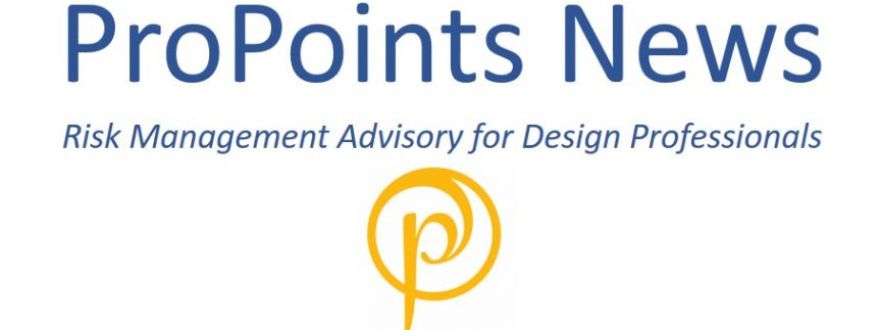
By Jonathan C. Shoemaker, Lee/Shoemaker PLLC (via a/e ProNet)
When asked, “What risk does the emergence of artificial intelligence create for architects and engineers,” ChatGPT identified nine categories of risks:
- Job displacement.
- Ethical concerns.
- Dependency on technology.
- Data security and privacy.
- Quality control and accountability.
- Lack of creativity and innovation.
- Regulatory challenges.
- Education and skills gap; and
- Initial implementation costs.
The ChatGPT response provided illustrates both the benefits of, and drawbacks to, the use of Artificial Intelligence.
The list generated by ChatGPT provides an excellent starting point for a discussion about the potential risks imposed by artificial intelligence on design professionals. While ChatGPT may be able to help with issue spotting, its amplification of those issues remains a work in progress. For example, the “ethical concerns” faced by design professionals using artificial intelligence are described as follows by ChatGPT:
The use of AI in design and engineering may raise ethical concerns, especially in areas such as privacy, security, and bias. AI algorithms can inadvertently perpetuate existing biases present in the training data, leading to biased outcomes in design and decision-making.
When amplifying on the “ethical concerns” faced by design professionals, ChatGPT fails to address the two most significant ethical concerns raised by our clients: (i) infringement on the copyright of another design professional and (ii) dissemination of the firm’s copyrighted work without permission.
Unintentional infringement on the copyright of another design professional could occur through the use of artificial intelligence. Imagine an architect using an AI-driven program to develop schematic design concepts for a project. The AI searches the information available to it and produces images of finished structures which may serve as inspiration for the architect’s design. But how does the architect know whether the images generated were generated by AI, as opposed to direct copying of the work of another?
Current AI-driven programs attempt to circumvent this risk by obtaining a license to use any work product uploaded by a program user. Viewed simplistically, the AI-driven program claims to hold a license to use whatever design information its users upload and, therefore, may use that work product to develop concepts for others. But this begs the question: does the person who uploads the work product to the AI-driven program have permission and/or authorization to upload the work product? And did they even read the terms of use?
The theoretical situation outlined above presents a series of potentially cascading inquiries:
- What if the AI-driven program doesn’t change the uploaded work product at all before disseminating the design to other users?
- What if the user who uploads work products to the AI-driven program did so in violation of a non-disclosure agreement with a client?
- What if ownership of the Instruments of Service for a particular project was transferred from the Architect to the Owner, prior to the Architect’s employee uploading the work product to the AI-driven program?
- What if all of these things occurred at once?
- What if this conduct resulted in being reported to the local licensure board?
If a design professional merely asked ChatGPT what risks it might face by using artificial intelligence, the current answer would not touch on any of these ethical concerns stemming from copyright issues. The other ChatGPT-identified risk categories affecting design professionals using artificial intelligence require similar consideration to fully-appreciate the scope and extent of the risk presented.
Hopefully, this case study on the use of artificial intelligence illustrates the fact that, while providing a good starting point for understanding an issue or concept, human intelligence remains critical to interpreting the significance of AI-generated content. The prudent design professional will recognize the importance of evaluating and assessing (for their own practices) the potential value to be added by artificial intelligence into their tools and take prudent steps to manage the risks associated with embracing this emerging technology.
Jonathan C. Shoemaker is the Managing Member of Lee/Shoemaker law firm with offices in Washington, D.C. and Charlottesville, VA. Jonathan believes that the best solution to most problems is often the simplest: What does the contract say? He begins every new engagement seeking to understand how the parties on a construction project elected to allocate risk and responsibility before the project, and then works with his client to develop a plan for bringing the issue to resolution as expeditiously as possible consistent with the client’s goals. Jonathan has tried cases before judges, juries, and arbitrators, and relishes the opportunity to advocate for his clients in court and in arbitration. He frequently speaks on risk management issues, best practices for design professionals, different project delivery methods, and legal updates both at in-house seminars for his clients and at programs put on by design professional organizations and insurance carriers.






